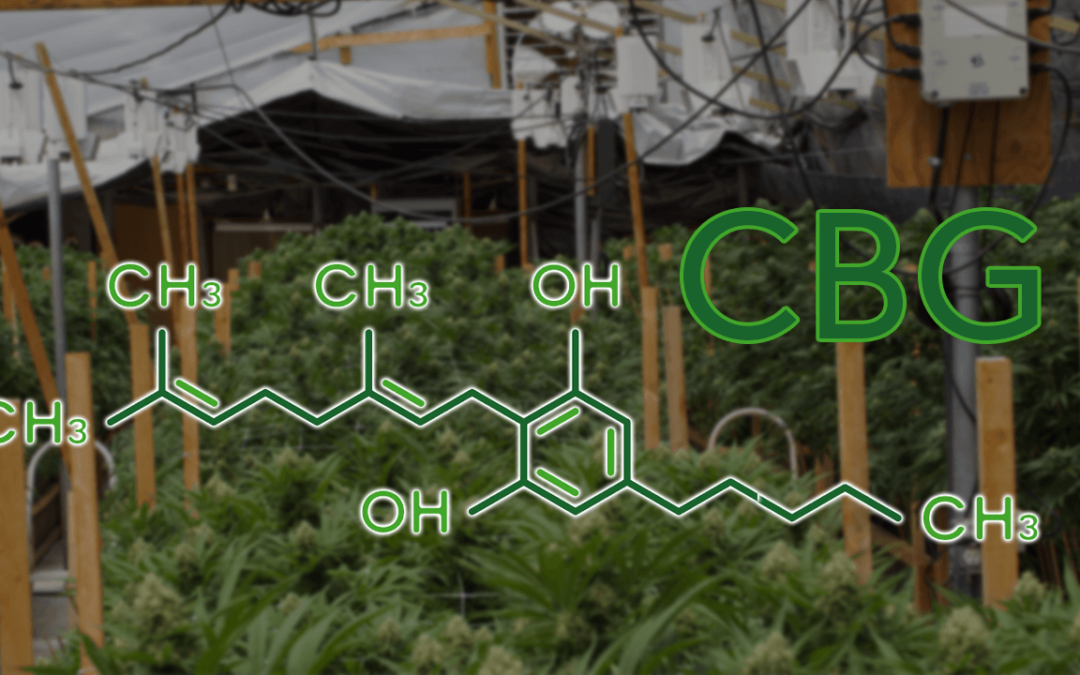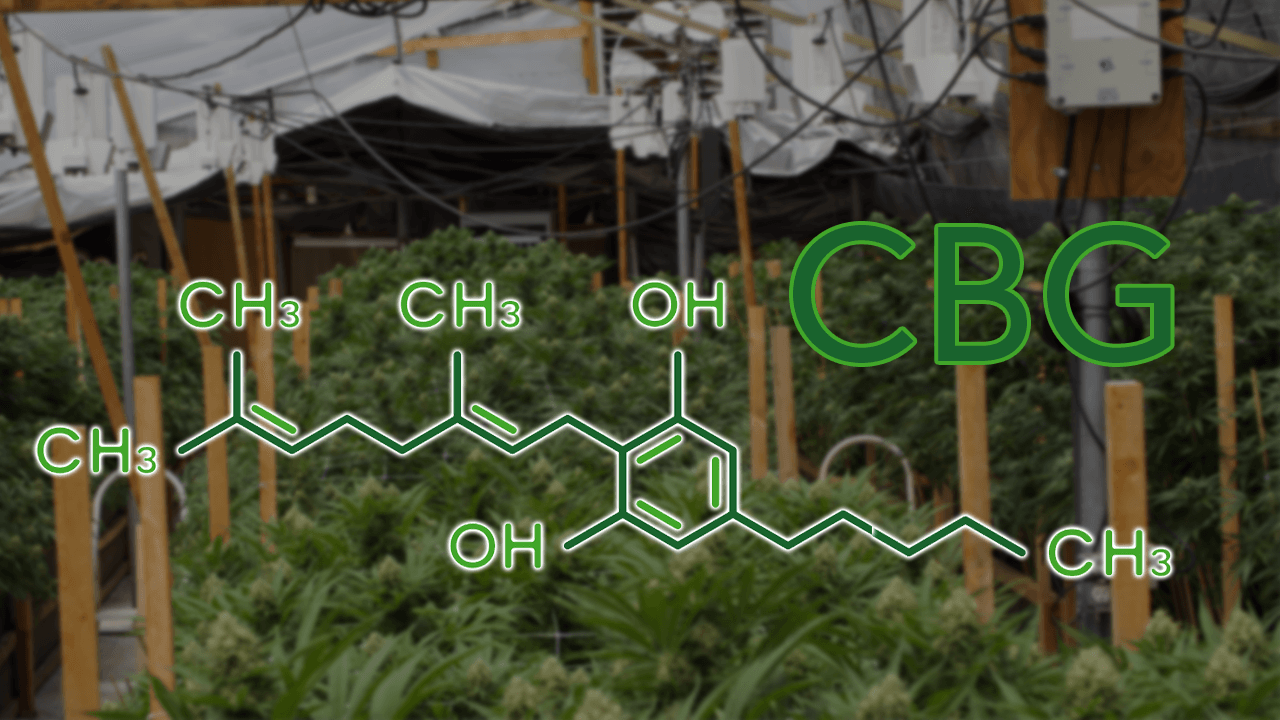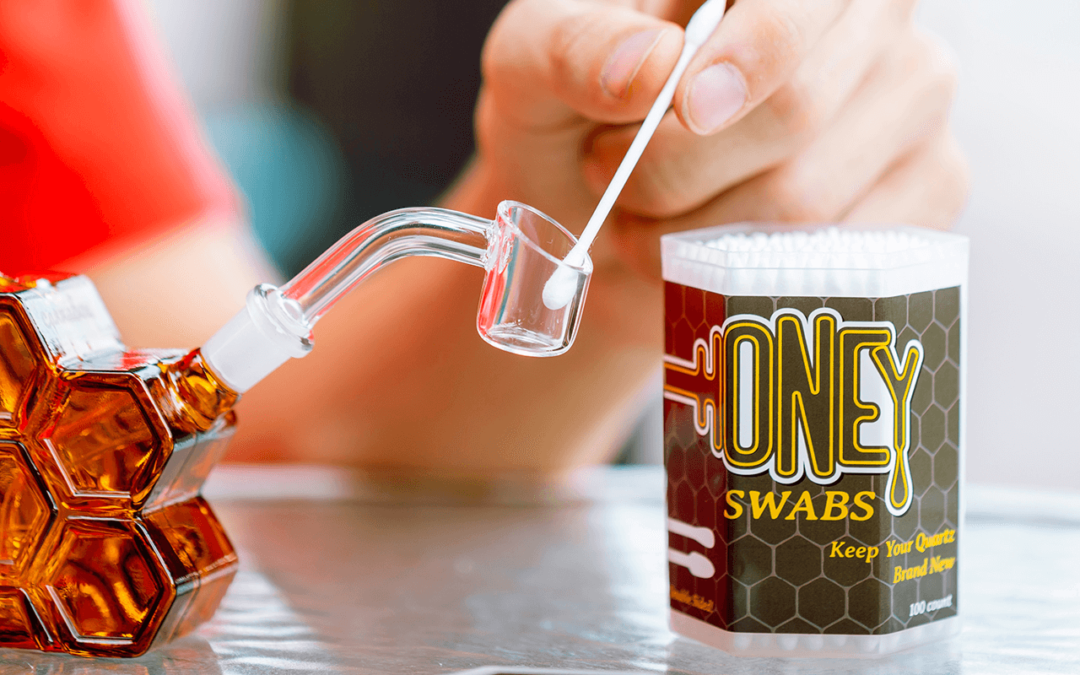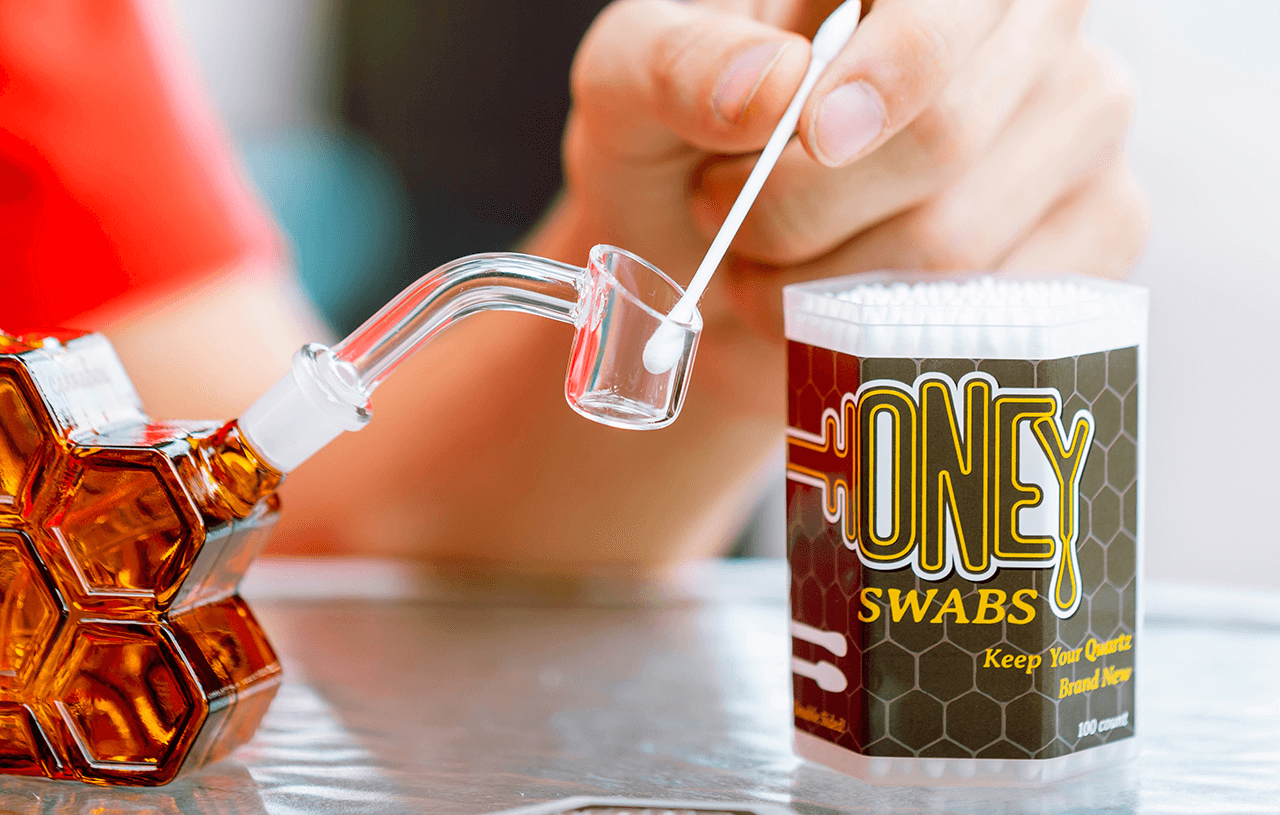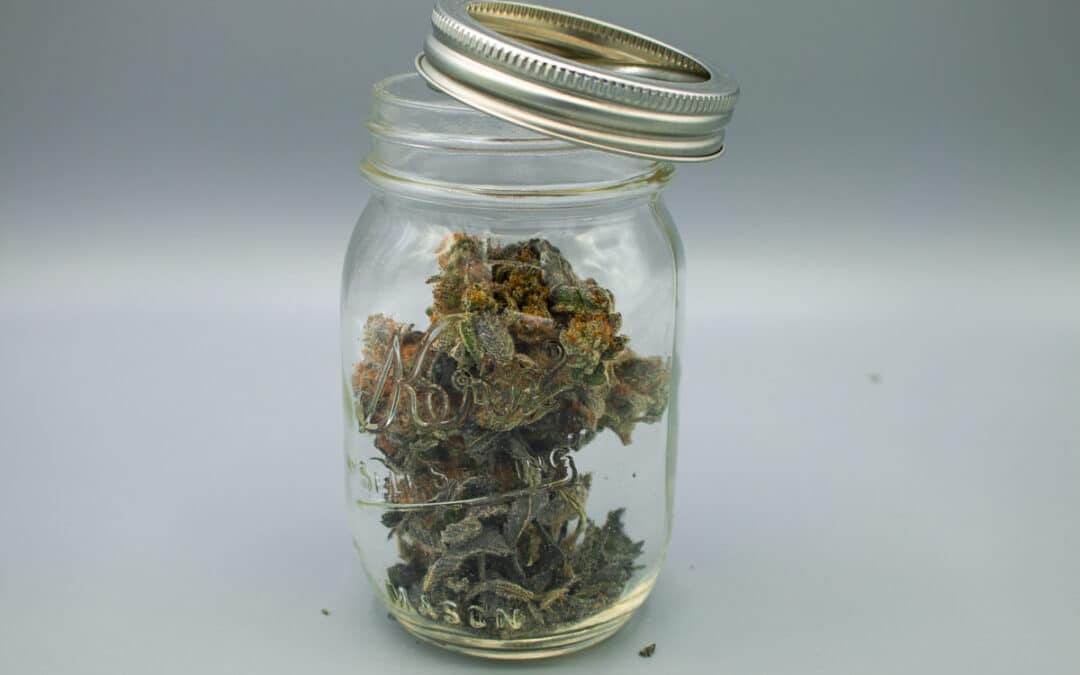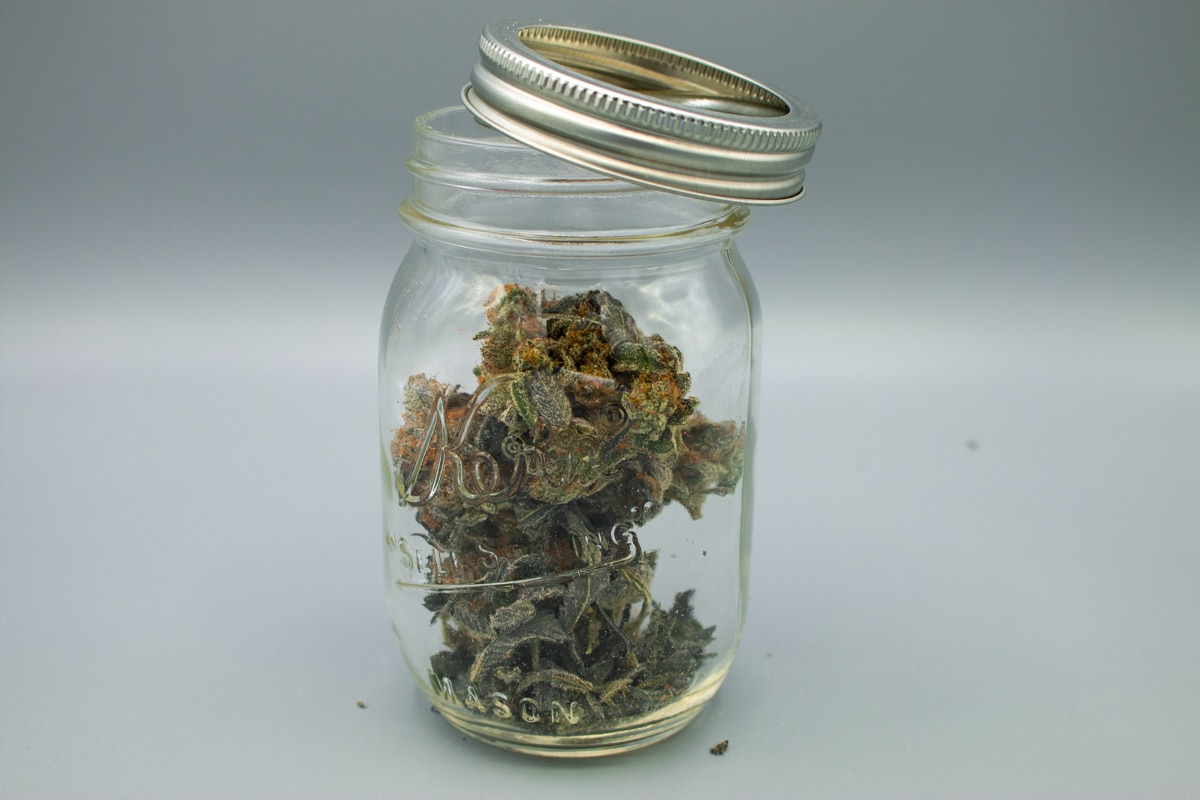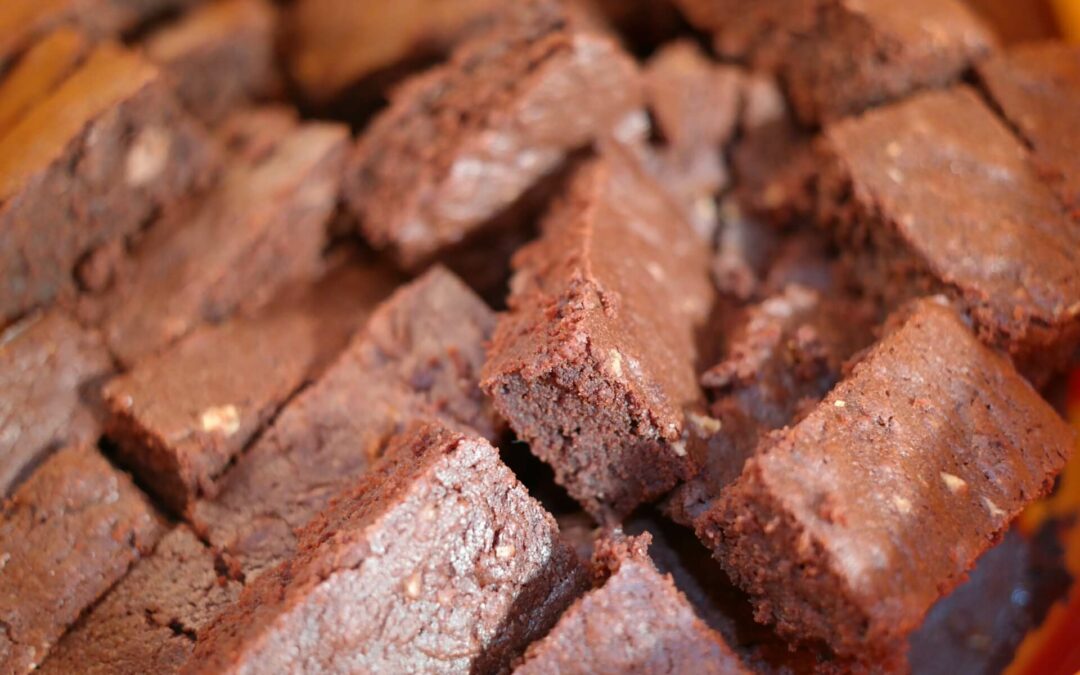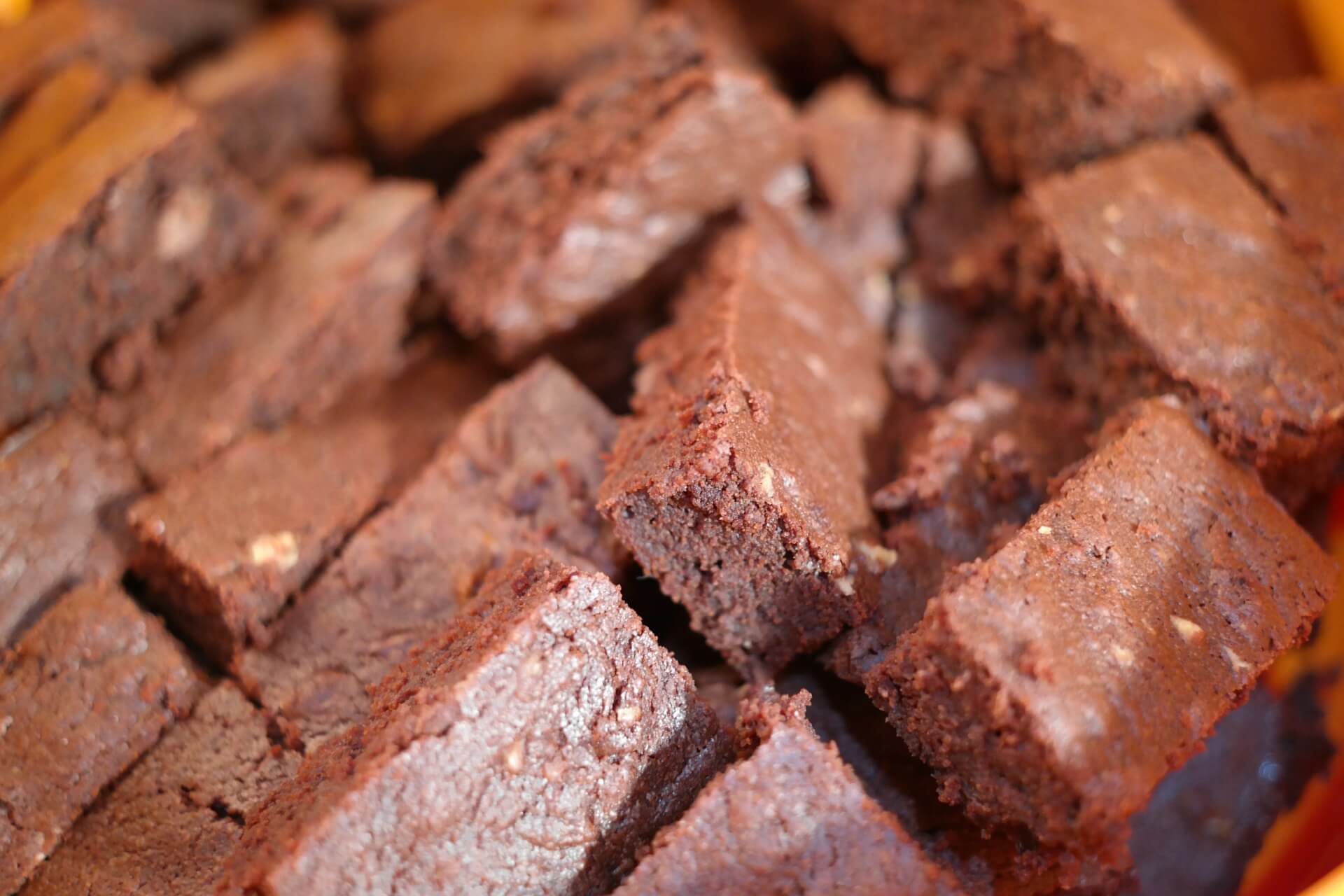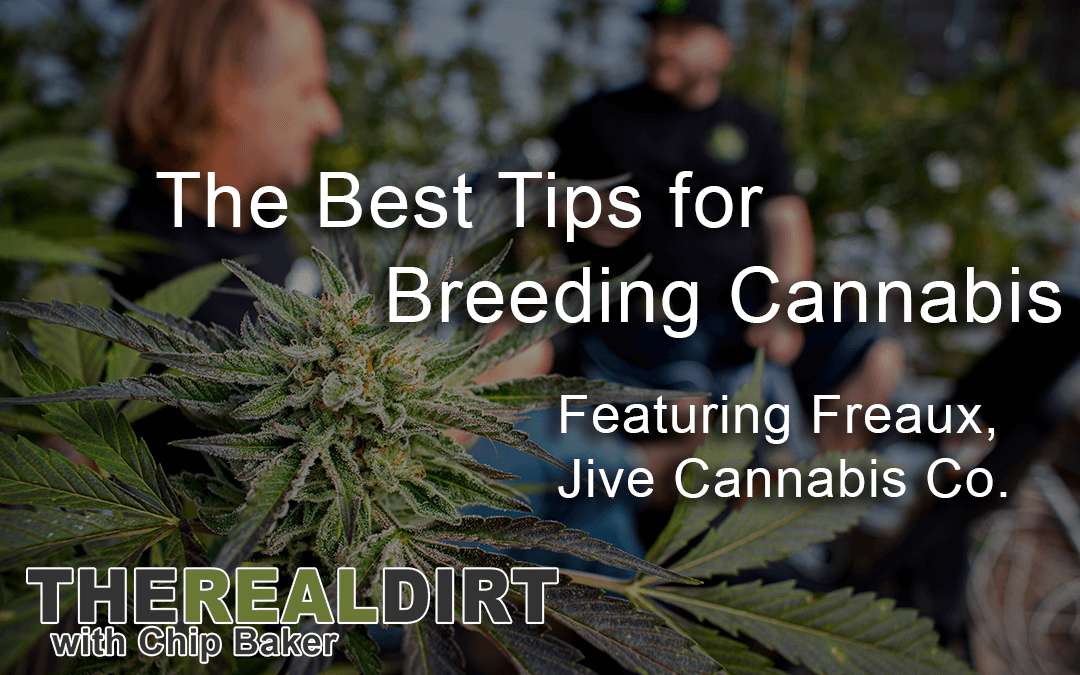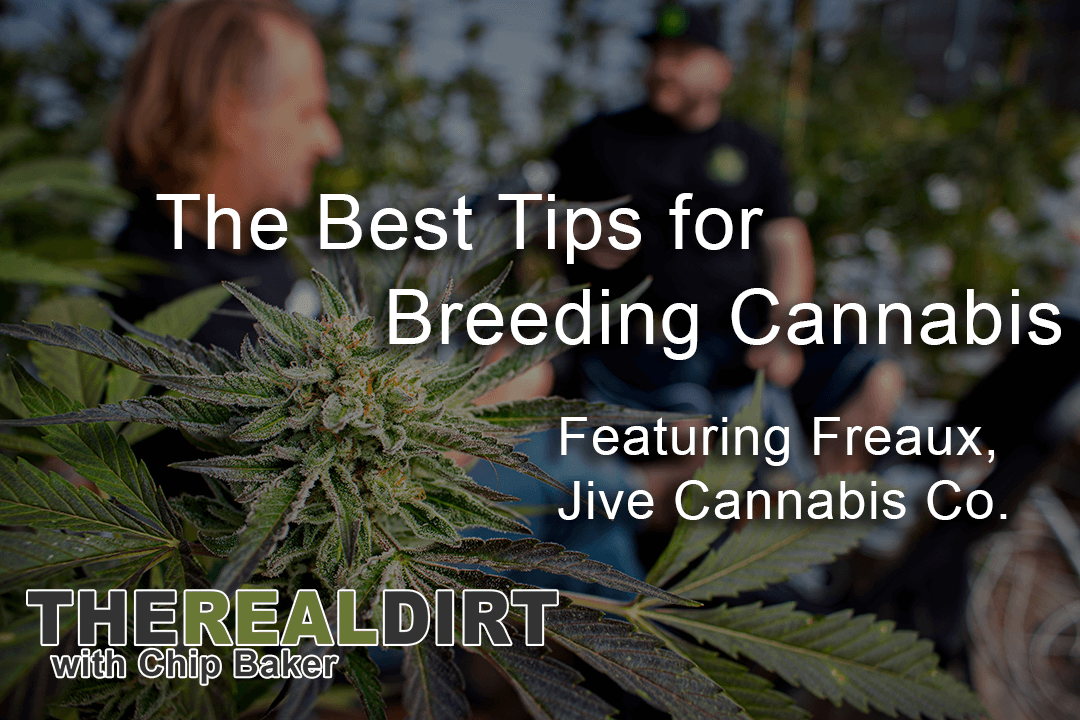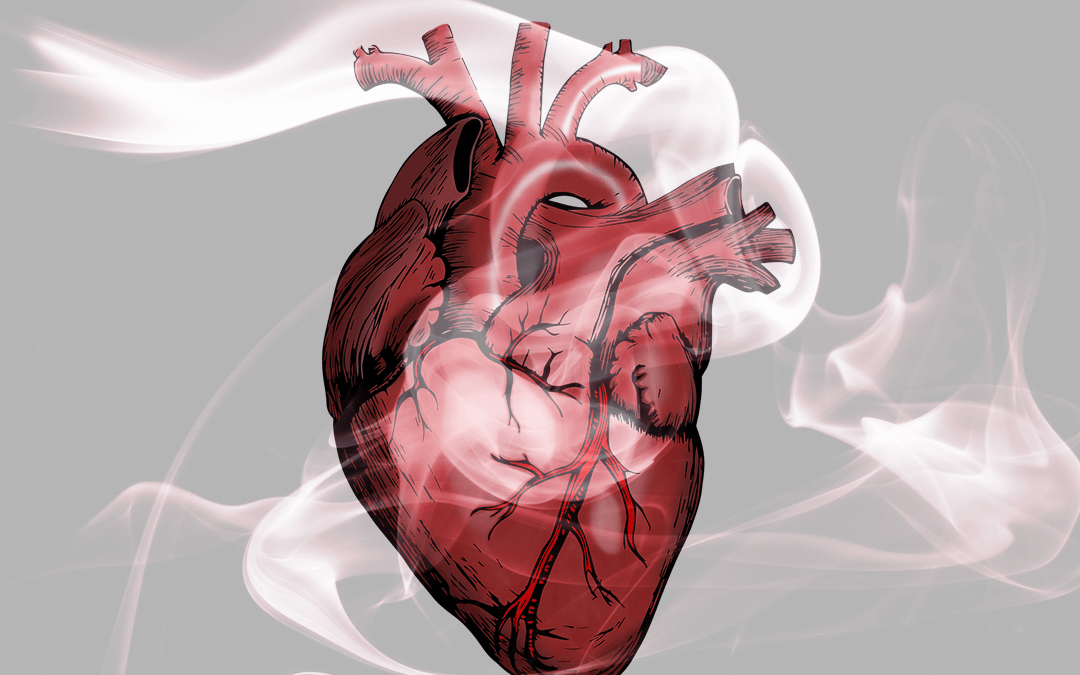Transcript
Chip: Alright, here we are. Here we are. Here we are.
Freaux: Hey, what’s going on? So I have –
Chip: What do you got there, man?
Freaux: Man, I got Purple Gelato. I’ve got Hot Rod, and I’ve got mixed Cream Cake, which is Ice Cream Cake times Cusherman’s Purple Gelato. So out of 33 times Purple Vapor and then Hot Rods, Motorbreath 15 times Grandpa’s Breath.
Chip: Wow, this is gonna be a really good episode of The Real Dirt with Chip: Baker. And today on Chip: Baker and The Real Dirt, we have Freaux: from Jive. Thanks for coming.
Freaux: [inaudible 00:44]
Chip: Hey, man, let’s get into some of that weed.
Freaux: Cool. Any one you want to try first?
Chip: Let’s – show me the jars. Let’s see it. Let’s see it. What do we got? We got – this is Purple Gelato. This is Ice Cream Cake.
Freaux: [inaudible 01:00-01:04]
Chip: Oh, man. So where did all these come from?
Freaux: Alright. So, the Purple Gelato and Hot Rod is [inaudible 1:12] Genetics. Those are actually his breeder cuts. The – I think a Cushman is just actually a pheno hunt that we went on at Jive.
Chip: Okay, alright. And where did that genetic come from?
Freaux: That’s Seed Junky.
Chip: Seed Junky.
Freaux: Seed Junky, yeah.
Chip: Okay. Alright. Awesome. Yeah, let’s check it out. Ice Cream Cake. Nose test, that’s pretty good. Pungent. It’s good. Right? It’s a kind of very what I’d expect.
Freaux: Yeah, it’s what you expect. Kind of like, Gelato notes like, a little like, minty with the Cushmans.
Chip: Hot Rod.
Freaux: It’s got that Motorbreath and the Grandpa’s Breath. It’s a little chemi to it, little chemi gas. Super heavy.
Chip: It’s delicate, it has as a delicate aroma. And it smells of Chemdog gas.
Freaux: Yeah, exactly.
Chip: Lineage breath. Oh man. Now, that one, that one’s pretty good. The Purple Gelato is really gonna have to do better than the Hot Rod for me to choose it first. Hold on. Let me, let me check the Purple Gelato. Wow, man. The Purple Gelato looks phenomenal.
Freaux: That deals off the charts I mentioned.
Chip: Oh, dude, look at this, man. This looks like it’s great. Look at that super purple leaf on it. Oh my god. There’s one little leaf in the hole. Don’t even look real, man. Oh my god.
Freaux: Yeah, that’s a special one. That’s one of my personal favorites right now.
Chip: Man. This looks great. And I’m sure it’s probably one of the best sellers. I’m gonna go for the Hot Rod, though.
Freaux: Hot Rod? Okay.
Chip: You came out on a windy day here. Thanks for coming out, man.
Freaux: I appreciate you having me like always.
Chip: Yeah, we’re just at the end of our harvest season here. It’s November 2020. We’ve had a great year despite COVID. This is our third greenhouse pull out of here, this year. I think you’ve seen most of them.
Freaux: I have, man. I tell you what, it looks beautiful out here. All these varieties and the way it looks. This is, man.
Chip: This runs fucking great.
Freaux: That’s what I’ve seen, too.
Chip: Oh yeah, man.
Freaux: It looks awesome, man. What are we looking at here? This is –
Chip: Tangie.
Freaux: Tangie and Do-Si. I tell you what, there’s some absolute beautiful phenos in here. Man, I honestly, to tell you the truth, I don’t have a lot of experience looking at you know, weed growing outdoor. But this is killer, man. I mean this, trichomes –
Chip: It don’t look like the normal outdoor weed, does it?
Freaux: It does not look like total outdoor weed. I mean, honestly, if you had this plant, brought it indoors you would have, I mean, it looks like some indoor to me, man. Honestly, especially some of the phenos.
Chip: Sometimes it looks better than our indoor even, man. I mean, it’s when you hit it right in these greenhouses man, it’s just, it’s better than indoor. The flavor is better. The overall yield is better. The individual, the density might not be as there. The pounds will be larger. The cost of production, the man – that shit’s hard, dude. It ain’t easy.
Freaux: No, I mean, I can only imagine. I mean, just looking at what y’all have going on out here, looks like a ton of work. What I’m surprised is just looking at it the outdoors, it’s just how fat these colas are. I mean, these colas are crazy fat. I mean, super crystally, lot of good color. I mean, it just looks beautiful. Y’all killed this round man.
Chip: Yeah, the glands are swelling right now. It’s really starting to give that indoor appearance. And you can tell the difference between our indoor and this, but most people can’t.
Freaux: No, to the average eye, if you pulled this plant and threw it under a light just for, you know, to kind of trick somebody or whatever I mean, this easily looks like some indoor weed.
Chip: Well, I mean, honestly, we are inside right now, aren’t we?
Freaux: Yeah, we’re in like a –
Chip: Yeah, we’re in a hoop house. This is, there’s walls and a roof. It’s kind of indoors, isn’t it?
Freaux: Yeah. Theoretically. Theoretically, yeah.
Chip: We walked inside the greenhouse.
Freaux: [inaudible 5:35]
Chip: If there was a door here, we would have walked in the door.
Freaux: You’re absolutely right.
Chip: But it’s growing by the sun. Yeah, that’s what we mean by outdoor though. I’m just bullshitting. But like, I’m proud to call this outdoor. I’m just always testing the boundaries of what’s what, you know. What people consider what is, and we’ve had some poor quality outdoor, I’ll show you that a little later on too. Oklahoma is a difficult, difficult place to grow cannabis. We try to fail as many ways as possible, so we’ll know how not to do it. But man, these greenhouses, these hoop houses like this, this technology if you know how to run it right, and can play it like an instrument, because this is just a passive greenhouse and you can open up the sidewalls and open up the ends. There’s generally not electricity in here. But if you play it right, it sounds beautiful and you can have some beautiful product in it. But man, if you can’t play it right, if you can’t ven it right, if you know, you can’t work the passive nature of it. It’s often too hot, too humid, right, you know? And just the quality goes down.
Freaux: I’m seeing this round man. I mean, it’s amazing. I mean I’m, you know, kind of walking in and looking around before you got out here. Kind of walked down and was looking at some of the different phenos. Man it just seems like every one looks better than the other. I mean –
Chip: Yeah, we’ll take a look at all of them a little later on.
Freaux: Yeah, I mean, this Tangie Do-Si is really expressing itself well. Put my nose on a couple of phenos [inaudible 7:17] kind of lean more toward the Do-Si side, some more toward the Tangie, some that are kind of right there in the middle, have a good balance of both. I’ve seen some that are, you know, showing real purple. But I think overall, I think looking at all of the plants, it’s just the, man, the trichome production and the frost. Every one of these phenos is frosted out.
Chip: Yeah, absolutely.
Freaux: I mean this, I don’t know what I’m looking at. It looks like a couple hundred.
Chip: There’s 250.
Freaux: Yeah.
Chip: 250 seed plants here. We veg them for, planted them in four inch pots, vegged them for 23 days, transplanted them in these five gallon pots, and they were flowered immediately.
Freaux: Yeah.
Chip: Right. And look how tall some of these guys are, right?
Freaux: Yeah, some of them are huge. I mean, everything looks beautiful in here, man. It’d be hard to man, it’d be hard to pick a winner. There’s so many to go through. But like, as I was walking down the road, I mean, it’s just one after the other showing, you know, different characteristics. The smells, the looks. Tell you what. everything in here looks ultra happy too.
Chip: What do you think about it? Good times here. Good times. Yeah, man. You know, I’ve always really been fascinated with Rastafari and religion. You know, primarily because they worship cannabis or it’s part of their sacrament, you know. I guess they worship God and Haile Selassie and some other stuff too, but, you know, they’re really into weed. So you know, I researched them. And one of the things I’ve really loved about the Rastas is they almost always have their own joint. And they’re large joints too, they’re not small joints. And in this time of COVID, I think this is the perfect time for us all to switch to these extra large papers. What size are these papers?
Freaux: They’re called king size.
Chip: King size papers. Everybody, if you’re sitting back right now, go to your cupboard and get some king size papers. And you know, about two grams of weed. If you don’t have that, just press pause right now, and go to the local store and get it, and we’ll wait for you to get back. Alright, now that you’re back, let’s grind that weed up and roll it into the largest possible joint you can, like me and Freaux are doing. And you know, we’ll just all smoke one together. So I’ll give you all a second just to put it together as we’re twisting it up. You know, always fascinated with different people’s rolling techniques. Freaux seems like to be a master here. He brought his own papers into –
Freaux: I’m not huge on the organics. I kind of like the classics just because it’s a little bit easier to roll.
Chip: No, I like the classics too. We just ran out. Could I have one of those? Yeah, they roll far better.
Freaux: Yeah, exactly.
Chip: I am a professional roller, that’s for sure.
Freaux: I’m still over here put it in the [inaudible 11:14], start smoking it.
Chip: You know the faster you get to roll joints, the more you get to smoke them throughout the day. See, I can smoke like five times more than you right now.
Freaux: You rolled another three in the amount of time –
Chip: Alright. Alright, well, hey, we’ll just take a break. We’ll walk inside to our into our medical consumption area. So we can legally consume these, the medication they call it. Actually this is just like, quality control for us right now. You know, Freaux often needs my expert opinion on how good his weed is, you know?
Freaux: Yeah, I tell you what, anybody that I want to give my honest opinion is you, Chip:.
Chip: Nah hey, I’ll give it to you man, that’s for sure. Alright, and we’ll just, we’ll just walk inside. Alright, now that we’re inside. The Hot Rod. Now, I love the bud structure in the Hot Rod. Do you think that’s why they call it the Hot Rod?
Freaux: I think you probably call it the Hot Rod because of like, the gassy nose. But –
Chip: Fuel. The fuel reference, okay, okay. It looks like it’s a grower though, man. There’s some nice nuggets in there, huh?
Freaux: Yeah, the Hot Rod is definitely a grower, big, fat crystallized nuggets. I know DVG always says for the gas heads this is a strain, God’s hands rejoice at this strain.
Chip: Oh, this one’s great. And this is Seed Junky.
Freaux: No this is a DVG, Dungeon Vault Genetics.
Chip: Dungeon Vault Genetics. Dungeon Vault Genetics. Oh man, this looks like a great one. Has a barrel, very soft taste. Like you could smoke this weed all day. There’s good flavor. Don’t get me wrong when I say soft, but it’s, the opposite of soft will be harsh or hard. Right
Freaux: Yeah.
Chip: Right?
Freaux: I wouldn’t want them to be harsh.
Chip: Yeah, yeah. That’s a hard smoke. Yeah, you don’t want that, right?
Freaux: It’s definitely very smooth. As far as like, the high, we haven’t got all the way like smoking it. And it’s pretty heavy. I’d say definitely can smoke it during the day. I mean, if just depending on how much you smoke. It does have a, you know it can knock you out, though if you’re not careful, if you overdo it. But I do start my day on the Hot Rod sometimes but for me personally, I kind of like to keep toward the end of the day. But when you do got to get medicated, this is the one that’s gonna do the trick.
Chip: No, this is great, man. This fits excellent in our medication lounge here. What do you think about this little place? Little indoor, outdoor medication lounge?
Freaux: I think it’s awesome man. I mean every facility needs to have something like this man, you know?
Chip: Yeah well with the laws, you have to separate it all. And so that’s what we try to do is separate it.
Freaux: No, I hear you on that. Yeah, it’s a cool little spot, you know?
Chip: Oh yeah, man sitting on the back porch with Freaux, this is The Real Dirt. Yeah, you know, one of the reasons I had you over here Freaux is ’cause you know, you love to pheno hunt, you love to plant seeds. That’s kind of how we met Jacob. I mean, you’ve been a customer of ours at Cultivate OKC from the beginning. But Jacob Sarabia that handles our commercial sales, he mentioned you, that you were down here and you bought seeds, and you were into genetics. And so that’s kind of how we linked up initially.
Freaux: Oh yeah, definitely.
Chip: Right? It takes people that are really into it, you know? You see lots of people plant seeds. And they’ll go buy the six pack or a 10 pack, and they’ll plant two or three, and then they’ll pick that, that one plant that’s, you know, out of the two or three. Let’s talk about why there’s a better way to do it, how there’s a better way to do it.
Freaux: Yeah, I mean so like, whatever kind of like, space you have or whatnot, I want to say like, the science behind it, you need to you know, if you have this bit of space to plant as many as possible, I think they say it something where 2000 seeds is where you’re gonna get, like a, an actual, like, shows you exactly how many genetic variations are actually in that. So as far as you can, you know, go into that, I mean, obviously, you can’t always plant 2000 seeds or whatnot. But the more the merrier, because you really want to give a good look at what’s actually out there. You know, you’re gonna –
Chip: I mean, I try to at least plant packs, though. You gotta at least plant a pack or, and I mean, if you can, multiple packs, right?
Freaux: There’s no way that I would just plant one or two seeds out of a pack, I would definitely not do that. You know, a pack, which is like 10 to 12 is like a good starting point. I mean if you can run about two or three of them, I think that’s a pretty nice, you know, run. You know, just depending on the genetics or whatnot, I mean, you can get lucky sometimes finding stuff and, you know, planting less than that. But, I would say if you are going to go ahead and actually take the time and effort and you know, all the work that goes into pheno hunting, that you’d want to have, you know, as many as you possibly can, but definitely more than just like, one or two out of a pack. Because there’s so many different genetic variations when you’re looking at phenos. And you want to have as many options as you can when you’re actually looking at it
Chip: And just to see it to learn it, right?
Freaux: Yeah, just to see it to learn it. And then, because as you start planting seeds, and you get to look at, you know, different variations in the genetics, you can see how much different they are than the other. If you’re only planning like one or two, you’re not going to really see anything at that point. I would definitely recommend to anybody who’s either starting out on it or whatnot to at least plant that full pack, or one or two, if you can. I know some people too –
Chip: It’s hard ’cause it’s expensive and people look at as like, “Oh, man, these are $80 packs and $200 packs,” right? And that’s how people look at it, but they got to look at it by seed and how much that seed could potentially produce for them.
Freaux: Yeah, I mean, if you’re looking, I mean –
Chip: Hey, let’s pick one of the plants you’ve planted a pack of seeds of this year that you’ve kept, because you’ve done that, right?
Freaux: Yeah, we definitely have.
Chip: Just like, pick a random plant.
Freaux: Let’s say the Ice Cream Cake Cushman.
Chip: The Ice Cream Cake Cushman. So when did you plant that out?
Freaux: Man I planted that probably, it would have been right after the Oklahoma Cannabis Cup. So well over a year ago.
Chip: Okay, over a year ago, you bought that pack for 150 bucks, or..?
Freaux: I think that particular pack was like, 200.
Chip: So you bought $200, you planted that pack, and you’ve had how many runs of cuttings off that since then? Two or three at least?
Freaux: Roughly three.
Chip: Right. So you’ve had three runs of cuttings off that initial investment of $200.
Freaux: Yeah.
Chip: Wow, that’s when it starts to make sense, right? If you think about all the pounds that have been able to grow, or all the plants that have been able to grown, 200 bucks is nothing for like, a great pack of seeds. And you got it with that too. I mean, you know, we’ve planted out other seeds where you haven’t got anything. I mean, I have. I know you have too.
Freaux: That happens all the time.
Chip: That’s most of the case, right?
Freaux: [inaudible 19:18-19:21] find anything just because you find a female and [inaudible 19:26] really like a winner you need to grow it out and maybe run it one or you know, another time or two to actually see if it is you know, something that you’re gonna wanna keep. But yeah, if you’re talking about it from like an investment, I would look at it to 200 bucks to have your own specific strain pheno that nobody else has is well, well worth your money.
Chip: Well worth the money.
Freaux: Well worth the money.
Chip: Absolutely. But it’s not a guaranteed gamble though, is it?
Freaux: [inaudible 19:57-20:05].
Chip: I would say, let’s see. We have four strains in the 13 that we sell at Baker’s, that my wife has at her genetics dispensary in Oklahoma City, Baker’s Medical. I believe the four of them came from seeds that we planted in the past two years. And the rest of them were cell cultures, right? Or cuttings people gave us. In that same period of time, we have planted dozens of packs of seeds that we hadn’t decided the weed was worth anything.
Freaux: Yeah, I mean, like we were saying earlier, it doesn’t always work out. I mean, especially too if you have like, a good lineup, which I know y’all do. You don’t want to, you know, digress from that. [inaudible 21:02] opinion –
Chip: You gotta be heartless, you got to throw it away.
Freaux: You really do. And then the thing is I know, you know, I know a lot of people. You put a lot of time and effort into it, and you really want to get something out of it. But I mean, it’s either got to have it or not, and you got to kind of have the, you know, the know how or, you know, the profile as far as like, what you’re actually looking for. Because a lot of people you know, it gives genetics a bad name, when you know, you get a pack of seeds and you can easily tell like, “Hey,” you know, “that’s not a winner. That’s not gonna make the cut,” but you still continue to run it and put it out there in the market. And it just kind of like, weakens the gene pool. And then on top of that too, there’s some really good genetics out there that people just got to get in there and find them. There’s a lot of good stuff in those pack of seeds. So if you know, you don’t find something, if there’s like – I know it’s happened with me several times, where you get a specific cross you’re really excited about, and you run a pack of them which is roughly you know, 10 to 12 seeds or whatnot. You don’t find anything, get another pack. Try it again or you know if something that you were really, really interested in – I know that’s happened you know, with us at Jive even like, recently we had a pack that we ran, didn’t really find anything. And the cross was really, really you know, appealing to everybody. We ran another pack and it’s kind of to be determined you know, if it’s gonna make the cut or not. It could go [inaudible 22:23] too but –
Chip: That’s the faith.
Freaux: Yeah.
Chip: Right? You gotta believe.
Freaux: You gotta believe. I mean you kind of [inaudible 22:30] right there.
Chip: You have to believe.
Freaux: You do have to believe.
Chip: I’ve kind of given that up with weed. And I don’t believe anymore at all. I actually come to it with like, “Oh, this is probably not gonna be great. And I’m gonna learn [inaudible 22:45-22:55].
Freaux: Yeah, you know with that too. I know a lot of people or some people I know, they kind of start making like, cuts or selections on stuff before they’ve actually you know, either harvested or dried it.
Chip: You run it. Yeah, absolutely. Absolutely. A lot of clone nurseries [inaudible 23:11] all over the country but specifically here in Oklahoma, it’s [inaudible 23:19] period of time even not just one or two runs. [inaudible 23:25], how many runs?
Freaux: So, I would say after two. But like, that third just for safe measure. But like, you know, at Jive we like to give it basically you know, one run, the initial run. And that’s kind of the you know, the initial tell as far as like you know, is it gonna make it? Should I get a second one?
Chip: Did it grow right?
Freaux: Did it grow right? How was it? What was the overall you know, smoke? Was it, did it smell good, taste good? You know was it easier to grow, was a friendly? You know, all those little like, factors you’re looking at. But the second run is kind of the you know, the you know, cement it where, this is going to make the lineup. I’d say the second run is kind of where you’re gonna, you know, cement it as far as like, “This is gonna be in our lineup. This is gonna be in our menu.” And then the third time for us would kind of be when you have enough of it, you’ve built up you know, your moms and your clones. And then the third time where it kind of be the grand finale where you’d be able to drop it to the patients. And then you know, see you know, how it reacts or whatnot, as far as like, you know, “Well, we liked it. Does everybody else like it?” You know what I’m saying?
Chip: Damn. No, that’s a great way to look at it. We do it’s very similar, but for different reasons. And it’s if we grow it from seed, we just grow it and see if we like the way it grows. I’m starting to transition though to like, a different program which is, plant the seed out and grow it enough to take a clone. Take the clone or to throw the seed away. Veg the plant for a small amount of time, a couple weeks and flower, right? As many plants as you can, attend area and to see all the pheno expressions. And then from that run, make my big cut. Right? And all the way through it, it takes a little more commitment and time. I don’t think you turnaround quite as quick?
Freaux: Yeah.
Chip: But if you’re keeping it in commercial production, it might not be the best way to go. But, man, it’s a little easier, you know? For me anyway.
Freaux: And I would say too, I know me and you have kind of talked about this before. That second time, when you actually do take the cutting, and then you, you know, you run it out a second time, you’re gonna get a little bit better expression to see like, what’s actually going to like, happen with it. And I know the last time we talked about it, you had kind of had mentioned that and I guess I really didn’t think about it, because you know, you’re more or less thinking, you know, I want to get it in and get into the rotation and stuff like that. But that second run, when you actually do take a cut and go from there kind of really solidifies it as far like –
Chip: It acts like the third run.
Freaux: It really does, you know.
Chip: It really does.
Freaux: And I would say there’s a much bigger difference between the first and the second, than there is from like, the second and third. The third run’s almost just kind of, you know, ramping it up or whatnot to actually make the menu or cut or what.
Chip: It’s just the guts to throw away those plants.
Freaux: Yeah.
Chip: And, you know, maybe give them away –
Freaux: It’s hard –
Chip: You know. But the seed plants, there’s a huge debate over it, but I prefer not to keep seed plants as mothers. They don’t produce mothers as well as clone plants do. I don’t believe so much in the multi-generational thing, because I know cuttings that are 20 to 30 years old, and they still grow bomb weed. But you know, we, all of our mothers are just within a couple of years old and you know, one or two generations off the seed plant. It’s the seeds, though, they just grow completely different. There’s a more of a symmetrical growth, the nodes grow directly across from each other, and then the clones, they grow alternate to each other. And the plants really produced differently because of that, and act differently because of that.
Freaux: And then also too, just to kind of throw that in there, like, I know a lot of people grow from seed, they might not, you know, work or train with their plants, as much as it were to see, like, you know, does it top well? Does it, you know, ven well? How does it you know, perform in kind of like a setting with like, other stuff. Whereas that second run, when you have you know, more you know, clippings, cuttings of it, you can really, you know, kind of train your plants to do what you want it to do into like, your program or whatnot. And I know, like, you know, the initial run of the seeds you’re just kind of seeing, is it good? Is it worth it? But that second run is really like, you know, is it going to make it or not? Because you’re vending it, you’re putting in a trellis, you’re staking it, you’re, you know, topping it, you really get to train it into your program, depending on, you know, what you would do or whatnot. And that second run, you know, is definitely the true, you know [inaudible 28:07-28:15].
Chip: Like Fletcher, the guy I got these seeds from, he can probably see the plants different. I know he sees the plants differently than we do. It takes me two solid clone runs before I can really see the plant.
Freaux: That makes total sense.
Chip: Two. And part of that’s also is like, you know, the first run is I’m throwing stuff away. In my mind, I’m looking to throw stuff away. And in the second run, I’m wondering, like how the keepers are gonna perform. And so then there’s still another culling then, right? And and it’s really I guess it’s the third run that solidifes if I’ve got it or not. And by you know, starting with clone from that initial run, you do save a whole run. You know, you’re gonna go three runs. You do lose, 7, 40, 50 days.
Freaux: Yeah.
Chip: So that’s what it costs.
Freaux: Man, it’s worth it in the end though.
Chip: Well, that’s what it costs too, because you’re gonna grow that and throw it away and it’s all worth nothing, right? The rest of it’s all for nothing.
Freaux: I know what you mean.
Chip: [inaudible 29:37-29:40]
Freaux: Yeah.
Chip: That was fun weed man. Oh, man. Well hey, are you ready to go look at some weed? Let’s get up and go outside and go look at some weed.
Freaux: Let’s do it.
Chip: Alright. Alright, in a stroll through the garden today with Freaux. Good to see you today, Freaux. So here it is, man. We got [inaudible 30:01] seeds, about the same time. We both ordered these seeds. I wanted to have you out. Well you didn’t quite get these seeds that we [inaudible 30:10] order and you got some seeds out of it. And so yeah, these are the, this is all Do-Si-Dos crosses from Archive. This room is all Tangie. Favorite phenos about [inaudible 30:34]. Let’s see, right here. I think this is –
Freaux: That smells good.
Chip: [inaudible 30:40-30:42]
Freaux: That one’s a real big Do-Si there.
Chip: Yeah, it’s sitting right next to this really quiet one.
Freaux: [inaudible 30:56].
Chip: So interesting thing about this why, when – I forgot. This is a [inaudible 31:01].
Freaux: That got a crazy nose.
Chip: Hey, check this out, trellis. We’re planting these plants up. And one of my employees forgot to actually plant the plant. And, and it rooted in there. By the time we figured it out, we decided that we just leave it and see what happens. And so I just remembered the whole thing we just walked in here. And that’s what happened.
Freaux: Man, you should run that one again. Just [inaudible 31:29] life right there.
Chip: Yeah, totally. Totally.
Freaux: It’s crazy the way weed [inaudible 31:35-31:42]
Chip: You know what I mean? I couldn’t like, help but wonder if like, if that was planted properly, would it look more like that plant to the left of it, you know?
Freaux: Yeah, that’s a beautiful one back there. Look at all those colors.
Chip: Yeah, that’s a that’s a good one too, man.
Freaux: Color really came out on that one.
Chip: Yeah. And when you, you know, we just stopped right at the beginning of the greenhouse. But when you look around, you kind of see the expression of phenotypes. And now we can like, walk down here and you can just pick out the kind of the ones you know, that are just right here. You’ve got this whiter one. You’ve got this one that’s going like, more purple, right? And then there’s the, this one here is like, a little leafier, it’s gonna definitely be bigger, go a little bit longer, right?
Freaux: For sure.
Chip: More the Tangie looking.
Freaux: Like you said, just right here in this small little spot right there. Man, if you I mean, the crystal production trichomes on that plant and that plant look wild, man.
Chip: Yeah, man. It’s –
Freaux: They look almost like, boom or whatnot. They look awesome. It’s crazy too. If you can see right here, that one looks pretty much like that when these two are pretty much similar but different. And that one’s kind of [inaudible 33:05] right there.
Chip: Yeah, absolutely. Alright. So structure on some of these are just incredible, man. I mean, you know, I mean, Fletcher really does do a great job at this. You could pick, someone could take this, you know, a six pack of this, and pick out one of all these different six plants here. They could pick any one, and it’d be great, great weed.
Freaux: No, for sure. I mean, any one of these, you know, definitely will be incredible weed.
Chip: But man, to get the best like, like alright, let’s play a game while we’re in here on the Tangies. We’ll start on the Tangies. And then let’s do it on the whole garden. Let’s pick up with that plant in here.
Freaux: Alright, I don’t want [inaudible 33:58].
Chip: 200 plants here. That’s down to the end.
Freaux: Let’s do it.
Chip: Alright, alright. So yeah, we just stroll through here looking for the girls. Alright, so we’re walking through the garden currently. Freaux, he’s feeling the stem. He’s caressing the top nugget, he’s smelling them gently, he’s looking at the structure. God, this is a really good plant right here, man. Just the plant, like, the structure and size, you could tell that [inaudible 34:31].
Freaux: Wow look at that one. Look at this one. That’s got a real good nose too. Man I think like you were saying earlier, they got some like clear cut like keynotes. You can almost see like, you know, like five different styles with obviously like, little variation of it but there’s some like, these green, fat ones or some more like, purple crystallized ones.
Chip: But those white ones man. I want the white, fat ones is the one I’m looking for.
Freaux: No, I hear you.
Chip: Right? Hey, and this one’s a good one. I mean just to stop and talk about this one. Like, it’s very, the colors [inaudible 35:21] really light. The nugget structure isincredible the top colas, you know it’s [inaudible the 35:30], pattern of it is really nice, has a secondary crown that grows you know, perfectly. This has a perfect shape to me.
Freaux: No, that does have a really nice shape to it.
Chip: But I mean I’m looking for it slightly better than that.
Freaux: Yeah.
Chip: But I want, I like that bud structure.
Freaux: Yeah, I’d say I like this structure right here too.
Chip: Yeah, I mean –
Freaux: [inaudible 35:56]
Chip: See now that’s a, that is a perfect grower for a vertical grow right there. See a green grow, where you were literally just planting you know, plants and trying to flip them?
Freaux: Yeah, it doesn’t have much.
Chip: There’s not much branching and just straight up, you can bottom that off real easy. It’s actually has a real OG type of growth pattern, if you look at it.
Freaux: It really does.
Chip: Yeah, this is that Tangie side to it. [inaudible 36:26-36:31] mentioned on it, but –
Freaux: Has more of a Tangie to it than those two, for sure too.
Chip: Oh, man, that one behind it, man. You see all of the braided, tight, swollen calluses on that one right there? I mean, wow.
Freaux: Super pretty one.
Chip: That’s a pretty one.
Freaux: I mean, if you just keep going down, they just keep getting better and better.
Chip: It’s hard to pick man.
Freaux: I can’t believe it man.
Chip: Oh, I wish you [inaudible 37:01-37:08]
Freaux: Man. This whole greenhouse, I mean, like you said, like you were saying, I mean, any one of these. I mean, obviously it hasn’t been, you know, smoked or anything yet or dried, but –
Chip: Just purely on growth patterns.
Freaux: Just looking at them. I mean, you know, what is somebody looking for? There’s, looks like there’s so many winners in here.
Chip: You know, and this is how we used to do it before testing came along, right? We just looked at it and picked them, and all the greatest weed in the world was chosen this way. Right? Until recently, we didn’t [inaudible 37:39] to tell us what to do.
Freaux: Pretty much trial and error.
Chip: It’s trial and error. But if you were so inclined, that you could pick the you know, test every single one in here and pick the one out by THC. Like, you know, that would be 250 tests of some sort.
Freaux: Yeah. No. Yeah, I mean the, I mean, that’s a lot of tests right there. Just thinking about it, yeah. I mean, obviously, you can’t do that. I don’t know, you know? It’s hard to tell just looking at it what’s gonna you know, what’s gonna have the most highs, you can’t look at it –
Chip: It’s solely for growth, man. And I mean that’s why I asked you in here, because man, it’s like, near impossible to pick it out of all of these different plants.
Freaux: Well, when you look at it talking like that, you look at different ones and you just see that. There’s some plants that are you know, look crazy have you know, crazy crystals, but you know, they don’t test high in THC. There’s some that might not look as good and they’re high in THC. I mean, that’s why it’s kind of one of the things –
Chip: That may look great, but don’t have any, like terpene expression.
Freaux: No, I know.
Chip: Right? Like, that’s it. That’s a common one right there. That’s a common one right there.
Freaux: I know, I know, me personally with Jive, we try to get you know, terpenes are what we’re looking for particularly. So it’s one of those things where, you know, smell, taste, really, you know, aromas and stuff like that, that tends to be the ones that test like, higher in, you know, terpene content or whatnot. The THC, you know, for us and stuff like that, that’s something that we don’t try to focus on. I know there’s a lot of people like, “Hey, what’s the highest test for THC?” And –
Chip: I got that 30%.
Freaux: Yeah, and you know, and then you get the weed, it’s really not enjoyable or sometimes it doesn’t even get you high. Like for which you wanna get high. It was really like, you know, classic effects like euphoric, uplifting and all that stuff, you know, comes from, you know, terpene. It’s not THC.
Chip: No, THC is just part of the story.
Freaux: It’s just part of the story. It’s one of the things once it’s testing, you know, in my opinion, up to like, you know, mid, you know, mid-teens or whatever, it’s gonna give you the effect of like, you know –
Chip: You smoke a little bit more of it.
Freaux: Yeah. And is it is it enjoyable, though? You know, you wanna taste something, it doesn’t have a taste, doesn’t have a good smell. I mean, THC isn’t everything in my opinion.
Chip: Yeah, absolutely. So yeah it’s hard to say.
Freaux: Yeah and look –
Chip: It’s hard to say.
Freaux: It’s impossible looking at it until you actually test it, so.
Chip: Let’s try to pick the, just the best one as we walk back down this way. Now you’ve seen it, let’s just pick one.
Freaux: Alright, let’s do it.
Chip: Okay. God, man. I mean like, I’m not, I don’t know man. I think –
Freaux: I’m still gonna tell you the one I liked was –
Chip: Was down here at the back here.
Freaux: Yeah. The one that caught my eye [inaudible 40:43] was either this one, or this one. If you’re going you know, maybe not off like, plant structure, just the actual like, look of like, the bud, and the cola, and it looks super frosty. It’s got a lot of good color. It’s going to have that bag appeal. [inaudible 41:00-41:13] one of the ones further back there, but –
Chip: [inaudible 41:16-41:22] Facebook man. This is the Green Rush Facebook group. I don’t know if you can hear us with all this wind, but you can download this episode at The Real Dirt podcast on iTunes. Go to therealdirt.com. You can check Freaux out at Jive Cannabis Co on Instagram. And hey, we’re gonna go see another greenhouse.
Freaux: Alright.
Chip: Let’s see. You’re gonna walk up this one right here.
Freaux: I mean, just, that’s some pretty weed right there.
Chip: Here we are with Freaux. This Chip with The Real Dirt, we’re looking at the phenotype expression of about 4000 seed plants.
Freaux: This is beautiful right here.
Chip: I get that, man.
Freaux: That’s a T1000?
Chip: That’s a T1000 Do-Si right there.
Freaux: Look at that. She’s loving life right there. What would you describe the nose of this one?
Chip: Here, hold this. Hold this.
Freaux: It’s almost kind of got like, like a very grapey maybe like, some sort of, some sort of berry fruit almost.
Chip: Flower. And it’s like a tea, almost like a, this is like a –
Freaux: That was interesting, whatever it was.
Chip: Green. Like a green tea. That sharpness of a green tea but –
Freaux: Like a very green tea.
Chip: But like, jasmine pearls?
Freaux: There you go, there you go.
Chip: Yeah, there we go. It’s like jasmine pearl tea. Great pick, bro. Great pick, man. Oh, wow. Just by sight, like he really did – there it is. That’s The Real Dirt. That’s why I started this whole podcast, is to get people like you to come and like, show me what was up. That’s The Real Dirt. Yeah, man there’s a bunch of great T1000s in here. You know, these all survived 33 days, 30 degrees, right? And then they’re on both sides. It’s T1000 on both sides.
Freaux: That’s another really good, look at that.
Chip: Yeah, this one right here with the label on it.
Freaux: I like that you got them stacked in here like this too.
Chip: Yeah, you know, it’s yes, these plants will grow better if they’re topped. But the way we get so many plants in here is by growing them untopped, you know? And packing them. In this room, there’s 450 plants. And it really lets us see a lot of what’s going on. This really the first time I’ve looked in here in the past several days, man, it’s really starting to stack out.
Freaux: Oh yeah. Some beautiful phenos in here. I’m really liking this T1000 process.
Chip: Yeah. Oh yeah, man, this baby’s beautiful right here.
Freaux: Oh wow, look at that.
Chip: Wow, hey, check this out. This is a total purple phenomenon I’ve seen over and over again. Look, there’s one green nugget coming off of it, and the rest of it’s purple. Right? It’s not hidden. Wow, that one’s a really nice one right next to it.
Freaux: That one’s really cool.
Chip: Oh, wow. These are getting close though, huh? What do you think?
Freaux: They do look like they’re getting real close. When are you planning on pulling these?
Chip: I’m just gonna take them in as long as I can. I mean, I think the 22nd is technically 10 weeks.
Freaux: I would think that this house looks a little further along than the other one. Just off of looks, you know.
Chip: Yeah, absolutely.
Freaux: These look like they could be pulled in like, maybe a week we can have something like that.
Chip: Yeah, there’s a big storm coming at the end of the week, we might pull some of them. But yeah, that’s exactly kind of our thinking. They might get pulled a little early. But it’s a struggle we’ve had and we have with outdoors, is finishing it. And you know, sometimes the mold you’re forced to like, harvest it beforehand. This is great man. We’ve done really well on our mold prevention, right? We’ve got a really, we’re on our pH, we’re using these pots that we’re planting in now, which is a product I manufactured these plant in bags. They really keep the pH perfect, really easy to plant. But we’ve been really on our pH and water filtration and that, I feel like those couple things have really helped with our mold. We just had some problems in the past. It’s so humid and hot here, man, it’s difficult. It’s difficult.
Freaux: I mean, looking great though, man.
Chip: Alright, and let’s see, Oh, here we go. This is, here is where we start the, this is the Face Off. This is Face Off Do-Si-Dos on the right. And on the left, it’s SF v Do-Si-Dos.
Freaux: [inaudible 47:24-47:27].
Chip: Yeah. You know, it’s either way, either with the Face Off or with the OSG, it’s, has a very backcross type phenomenon. All these plants really have a similar look.
Freaux: So he’s got a really good gas nose. The type of gassy nose everybody’s looking for.
Chip: Man, there it is. And there’s just so many to choose from man. You see, you see what I mean?
Freaux: You’re gonna have a hard time deciding one in here. I mean, I’ve never even personally seen like hundreds, you know, ran at one time at one variety.
Chip: This is the largest one for us too, don’t get us wrong,
Freaux: This is crazy, man. This is a treat to be in here for sure. Just seeing all these different phenos and all the expressions, and this is really a sight to see. I mean, really getting the full expressions that you can get out of these ladies, man. Just so many types of, so many types and varieties just, man.
Chip: Yeah, the, you know, talking to Fletcher about all this, the Face Off Do-Si-Dos cross, he thought we would have really good luck with it, that it would be really uniform. If we were trying to sell it for bag flower. And you walk through here and look at it, and it does really all look a similar, have a similar look. There’s a couple standouts.
Freaux: Really good nose, this one has a really good nose. You could really smell the Face Off in that one.
Chip: Yeah, we grew Face Off for years.
Freaux: Super crystally.
Chip: Yeah, we had a Face Off just recently, but we let it go.
Freaux: How come you let it go?
Chip: Man, it was actually, it died out of neglect. You know, unfortunately, with large operations like this, and I’m a little bit of a math professor. Like sometimes, plants get forgotten about or like, special projects of mine and, and that’s what happened. We had a dad and it died.
Freaux: Yeah, some of that, and then that’ll happen. I mean, but hey, that’s why you got all these varieties out here now, find a better one, huh?
Chip: Yeah, to find a better one. Absolutely. These were all feminized seeds. We had a couple hermaphrodite show on them but man, like, well above the 99.9%. Right? But you plant out so many seeds and you’re gonna see it. You know, it just happens.
Freaux: I mean yeah, pretty much nature, you know? Man, this Face Off is pretty special man. I’m getting some really good aromas off these ladies.
Chip: Yeah, so here’s the problem, right here. You see the mold?
Freaux: Yeah, I see it.
Chip: Yeah, that’s caterpillar damage. You can pick that off and you’ll see a little hole down in there, right? From where the caterpillar was eating it away. So, that’s our problem. That that will force us to harvest before the plants are ready unfortunately. But on our indoor runs, we get to take it all the way. We got a Rosie up in here so yeah, man. Well, I tell you, I want to take you over to the Lemon G house.
Freaux: I’d love to see it.
Chip: Let’s go see it. Let’s go to the Lemon G house. Ah, it’s just over and over again, huh? [inaudible 51:10-51:48] R&D at the greenhouse. [inaudible 51:50-52:02]. Watch out for this puddle.
Freaux: Man, that Lemon G’s got a good nose.
Chip: Man these things, so resilient. Huge, huge yield.
Freaux: What would you describe like, a Lemon G nose as?
Chip: Well man, that G13 has this own like, thing. I can see it in some of this stuff, right? But the it’s rind, it’s not lemon. It’s the rind, or like the outs like, it’s not the cut lemon. It’s not like that. That’s the rind.
Freaux: No I think that’s a good way to describe it. We have a strand Sunshine Lime, has got Lemon G in it. And it has like, it definitely like a lemon citrus but like you said, it’s like a, there’s something else there. It’s like a rind like you said. I could definitely see that easily.
Chip: Well yeah, look at this here man. There’s some just huge nuggets in here man. Like producer, this is the producer for sure.
Freaux: I was literally about to just say that. This is definitely, the colas are the fattest in this house for sure. I would definitely say, man these, some of these, there’s double the size as some of the other houses we went through.
Chip: Double, triple. Yeah, totally.
Freaux: Man, that’s got a crazy nose right there.
Chip: Yeah, these plants are all, a lot of them are five foot tall. There’s a few that are six foot tall. They were literally vegged for 23 days in a four inch pot from seed. Planted the seed in a four inch pot, 23 days later put in this pot and flowered it. And that’s how much these guys stretched. I mean, they were all about a foot or more tall, but like, still like.
Freaux: Man, you got some Louisville sluggers in here man.
Chip: Dude, totally man.
Freaux: Straight up baseball bat.
Chip: Yeah, right here. These guys, I can’t even see to the top.
Freaux: I mean, that’s, I mean, I got a big arm. It’s double the size of my arm, some of these fellows. Look at that.
Chip: Ah, it’s been fun, man. I tell you. We’ve got a couple other Facebook lives. Some Green Rush group now, this is The Real Dirt podcast in the season, I’m a little hot and sweaty. But man, we love showing you guys some of our videos this summer. We haven’t really shown them other places, but we’ll try to put some more out here on this channel. Oh, yeah, this one. This one right here has that lighter green color, right? A little bit more less leaf, more calyx development.
Freaux: Yeah, that’s crazy. Look at that. You’re like psycho production too.
Chip: Oh it’s sticky man. It’s sticky.
Freaux: This is the first one I’ve come across that had some. I like that little expression of color. Although there’s something with me –
Chip: You like that purple, you from the south, aren’t you? Wait a second. I can hear the Lana or is it Nashville in your voice. What is it?
Freaux: I spent a lot of time in New Orleans and Atlanta –
Chip: Atlanta, ATL.
Freaux: Spent a lot of time in Atlanta, I was out there for quite a while, spent there pretty much –
Chip: They like that purple up in there.
Freaux: They do.
Chip: Yeah, give me that purple, smells like purple.
Freaux: Yeah.
Chip: This is my native tongue. I’m from Georgia. This is the way we all speak there. I’ve worked hard to mask my accent to sound like a straight, straight gentleman.
Freaux: Yeah, you pinned that right. They definitely do like colorful weed out there.
Chip: Man. I mean and everywhere, but this is a great one. Wow.
Freaux: That’s got a good nose right there. I love that Lemon G nose. I think this is gonna be just from what I’ve seen so far from everything, this is probably gonna to be the terpenes’ most unique profile, I think. I’m really getting some unique smells out of here.
Chip: Dude, you know what my plan is? I’m gonna take this house and one just like it, and turn it all into sauce.
Freaux: Oh, man. That’s gonna be tasty right there.
Chip: I know, I know.
Freaux: People are gonna love that.
Chip: I might, we might keep some of it for smoking. But we grew this for sauce.
Freaux: I gotcha. People are gonna love the taste of that.
Chip: Oh, this is gonna, there will be no better. But we really love it, man. It’s a great strain to grow. So yeah, man, we got some big nuggets. I feel like we, you were really able to see it in here. We’re gonna walk directly over to our other Lemon G house that was grown under a clear tarp. You ready to go?
Freaux: Sounds good.
Chip: Alright, here we are now. This is the greenhouse with just the clear tarp, right?
Freaux: Wow, man. This is, what strain is this?
Chip: This is the Lemon G, same strain. Same strain. I planted 600 seeds. This is 300, 300 over there.
Freaux: Man, these are crazy fat in here. I like it. Man, this is even fatter than the other house.
Chip: This is even better than the other house. But you know, let’s walk through it and see it man. Go, go, go. Go on. So the plants are maybe a little bit more uniform growth in here.
Freaux: I could definitely see that. It looks like, it seems like the other tent it was like, man. I guess my initial thought would be there was like, a lot of fat nuggs. But then there’s you know, some other stuff. You look in here, just boom. Each bulb, everything’s prepped.
Chip: Yep. And the diffusion of light works great in here. I’ll tell you, here’s the difference. You’re not as, over there, it’s so sticky. Right? That’s the difference. Like feel, like, when you walk through here, that is not as sticky.
Freaux: It’s not.
Chip: It’s not as sticky. It doesn’t have that smell either. And that’s how we noticed it initially, it was just the smell, right? I haven’t scoped it, but these buds like, look like they look more uniform, which we’ll make bigger. I think they’re a little further along though. Right? Like that blue house is, seems a little earlier.
Freaux: Yeah, I could definitely see that. I could easily see that.
Chip: But the buds are looking better in here. But they’re earlier and maybe more resinous in the blue tarp.
Freaux: No, I could definitely see that. Just looking through it like halfway through it. I think there was a little bit of resin production in the other ones. But like you said, these do look further along. And I mean, I mean every plant in here is crazy fat. I like how you scroll down with –
Chip: Yeah, totally. Totally, totally, totally.
Freaux: Little trading right there.
Chip: Yeah, that’s how we keep the bugs down right there. We’ve got these Boston terriers, French Bulldogs trained to track down any and all bugs. They also lick PM clean that bottom branches. And they do a real good job of that, because they have such low fur. They don’t bring any dirt, or debris, or bugs in.
Freaux: Man, this Lemon G man, is beautiful. I really like this plant.
Chip: Oh man, it is now one of my favorites.
Freaux: I can’t believe how fat it is in here, man.
Chip: Oh dude, it’s huge. It’s huge.
Freaux: I mean, these are literally two times the size of my arm. Some of these colas are literally double my wrist.
Chip: Yeah, huge nuggets, so uniform. Like, some of it, you see the DoSi purpleness in it.
Freaux: There goes me with my purple again.
Chip: Yeah, there’s your purple. There’s the purple.
Freaux: I like the way that plant looks a lot.
Chip: A little bit of caterpillar mold in here. But man, just incredible, incredible nuggets. So do you do use, what type of spreadsheets? Or what type of cataloguing do you use to keep track of your phenos when you’re..?
Freaux: I mean right now –
Chip: I just walked down to almost the end, I’ll show you my favorite one. Well you got to keep a list of it somehow.
Freaux: It’s just like, by hand right now. I mean, we just, pretty much just writing it down on paper, taking some notes on it as far as like, you know, what we like, what we don’t like. But I don’t have any like, uniform the way, I should get more organized and put it in like a spreadsheet or whatnot. But I’m pretty much just you know, piece of – oh wow. Look at that one. This is the one you’re talking about?
Chip: This is one of the ones I was talking about, right here. Look at this. Yeah, dude.
Freaux: Damn. Oh, that’s got a nose on it too. That’s gonna be some heat right there man. I like that a lot. That’s got a great nose right there
Chip: Yeah, purpley leaf –
Freaux: This is your favorite?
Chip: That’s one of my, I got another one like, right around here. Oh yeah, this. Let’s see this, one of these white ones right here, because this is the purple one. And then there’s a big white one long, but it might be like, I see, I think I see it further down here. We got that purple, we got the white. Yeah, I’m not very much of a [inaudible 1:02:55] but…
Freaux: Beautiful, beautiful weed in here, man.
Chip: Oh, this is it. This I think is my favorite right here, this one.
Freaux: Did you say these were fems or they’re [inuadible 1:03:06]?
Chip: These are all fems. Lemon G fem, Lemon G Do-Si-Dos.
Freaux: It’s got a lot of uniformity in this particular shelf.
Chip: Oh yeah. Just as far as like, plant growth production, man I often choose plants just on like, how they grow more than like the nuggets they make.
Freaux: So man, this particular plant? So all the other ones are you know, big and everything. But this particular plant it’s big and swelled out, but it’s just crazy dense.
Chip: It’s so hard, man. It’s like a –
Freaux: Man, that’s got some good, good density to it. And all the other ones are like big and spread out, but then this is, that feels nice man.
Chip: Yeah that’ll produce. That’ll produce. Sweet, yeah. Let’s walk out into this next house.
Freaux: Oh wow.
Chip: Here we are, Chip Baker with The Real Dirt. I’m with Freaux, we’re in house number 412345 here, and once again, we entered a house with saying, “Oh wow.”
Freaux: This looks great. In every one we’re going into, there’s something different.
Chip: Yeah, it’s just, I know man. It’s so cool to see it all.
Freaux: I like you got this one trellis too.
Chip: Yeah, you know, we, this is all Sour D on the right. And all Sherbadough Do-Si-Dos on the left. And it just became real easy for us time and space to do it. The other plant, the other ones, I’m really looking at them. And so we left them go a little longer before we you know, staked them up and. If you want to trellis stuff, you really need to put it in early, putting it in there late is a pain in the ass so. But all the rest of the stuff is trellis pretty much from here on out. Yeah. So, this is the Sour D on the right and the Sherbadough Do-Si-Dos on the left.
Freaux: So the Sour D and then –
Chip: Sour, Sherbadough, Do-Si-Dos.
Freaux: That’s got straight Do-Si structure. That’s how [inaudible 1:05:14].
Chip: Here’s that purple for you. Let’s get a close up on this purple.
Freaux: That’s got a really nice color on it. Sherbet Dosi is what, Sherb times Do-Si?
Chip: It’s Sherbet DoSi –
Freaux: Times Do-Si-Dos.
Chip: Do-Si-Dos.
Freaux: Gotcha.
Chip: Yeah. So yeah, there’s the Diesels over here. You know, Diesel is one of my favorite plants of all time. And it’s a little later, it’s just starting to come around. But there’s some good phenos in here. I think this one right next to us right there, it looks pretty good in front of you. But yeah, this stuff’s all got weeks and weeks more.
Freaux: Man, all the time I’ve ever ran a Sour Diesel, I don’t know how real the cut was or whatnot. But look like, that thing could have gone 12 weeks easily. If we cut it at nine or something like that, just to –
Chip: Let it go. I’ve seen it go to 77 days many times. 70 days is the way you grow Diesel. But you can get five crops a year on a 70 day Diesel man, you know? Oh, there’s Wyatt, our farm manager slash head grower. What’s going on, Wyatt?
Wyatt: Just growing great weed, hanging out.
Chip: Oh, did you vote today? Who’d you vote for? Is that [inaudible 1:06:40]?
Wyatt: I voted for [inaudible 1:06:42].
Chip: [inuadible 1:06:44] for president. [inaudible 1:06:45] for president.
Freaux: There you go. Have you seen anything that has like, a really good traditional like, Sour D nose? I mean, Sour D’s got –
Chip: And it’s just starting to come around, man. It’s just, but this cut, I’m pretty sure Fletcher got this cut from me years ago. And this is the Sour Diesel, East Coast Sour Diesel cut. Right?
Freaux: That’s some of the best smelling weed known to man right there.
Chip: Yeah. Oh, absolutely. And one of the first branded weeds. OG, Diesel, they are about the same. Same time, right? Oh, dude, this a nice, nice purple one’s got some nice colors here. And some braiding.
Freaux: That’s kind of, that’s kind of crazy.
Chip: Yeah, this is all cutting edge nutrients. Our soil, we added an organic complex to it. We’ve used both their synthetic line and their organic line.
Freaux: Which one you like better?
Chip: Man, here’s my advice for people. If you want great, organic weed, is get your plant established and growing using three part Cutting Edge and like, a four inch pot. And then when you transplant it into your forever pot that’s got other organic nutrients in it, right? Water it like, once or twice with Cutting Edge synthetic nutrients. Once at the start of flower, once at the end of the stretch. And man, you’ll have great huge, incredible tasting, not purely organic, but organish versions. And then all the other, all the other waterings, use organic. His Organic, His Sonoma Gold Organic, right? But just like, two synthetic waterings, establish the plant with the Cutting Edge and man, that grows great organish weed, for sure. And that’s kind of what we have here, right? This is both John’s Sonoma Gold, and the Cutting Edge three part, and organic product in it. It’s now just getting water and will get water for the rest of his life. So I like a combo. I don’t have to be a purist anymore. Oh, you like that pure, pure, purple nugget though, don’t you?
Freaux: Man, this might be the best col I’ve seen on any of the houses –
Chip: Oh nice.
Freaux: I really like the way this looks. It’s got some nice density. It’s got the color, color bag appeal. Good nose. Just really caught my eye as far as looking.
Chip: Yes, oh man.
Freaux: I mean everything down to the –
Chip: I mean what I really like about it, is even the nuggets near your knee are the same maturation kind as the nuggets towards the top, you know? I mean yeah of course it –
Freaux: It’s got the Do-Si structure too.
Chip: Yeah, yeah. Yeah the Diesel has a reputation for having you know, more feathered buds, right?
Freaux: Diesel always kind of had like you know, you get a bag of Diesel, it’s usually like, kind of smaller popcorny, almost like, kind of like this nugget looks right there. You know very, doesn’t really come on being the huge biggest nuggets, but to me Diesel’s always had one of the best nose and taste there is.
Chip: Yeah, man. You hit diesel right and that Super Skunk comes out it, and it just grows incredible man. I’d say the nugget by your elbow is more like Diesel like, there’s a, man it’s really taken on the hybrid appearance. I think in the next coming weeks, we’re really gonna see the Diesel come out of it.
Freaux: It almost has that like, traditional Diesel look, like, you know, that orange and the light like that and the –
Chip: Yes. Totally. And I think this nugget’s gonna look like that. It’s just, you know, it just needs a few more weeks. Right? Yeah, so we’ll give all these like, maybe two more waterings with the Sonoma Gold I think. And then these will be done, man these Sherbet Dosis, I think they might just be on water. Oh, look at this purple.
Freaux: Yeah, there’s a couple different similarities with these purple ones that you can kind of see as it stacks down, like a lot of similarities you know, genetic wise having that like, look. That’s another one I like a lot. I still think I like the one down there that’s a little fatter, but I really like the way this looks right there. This one pretty much if you’re looking at like one of these types of phenos, that went down there that like filled out better, stacked a little fatter. You know, down there would probably be, obviously you gotta smoke it and, you know –
Chip: Yeah, yeah, right, right, right.
Freaux: Just for the look, that would be the, if you’re looking for the purple, looking for the thickness, you can easily see that that particular type of pheno down there would be almost like, all the good attributes of it, you know?
Chip: Yeah, there’s so many more to choose from. Like, this is a good hybrid of a yield or like, that’ll be a purple for sure. But it’s just a little further behind than these other ones.
Freaux: Man, this is crazy. This is a treat to see the, I mean just all the –
Chip: I’m glad I could share it to you man.
Freaux: Man, I mean –
Chip: Do you people understand it, they’re just like, “Look at the buds, man.” But like –
Freaux: We’re pretty much directly in one of your, you know, one of your houses. And as far as you can see the right, as far as you can see the left, and just, I mean, hundreds. What is there, 500, 600 plants in here?
Chip: 550 plants, right.
Freaux: Yeah, I mean, just man, this is crazy. Seeing all the expressions that –
Chip: Oklahoma, man. This is where it’s at. Oklahoma gives us this freedom because we don’t have square footage, and regulations, and we don’t have plant count regulations, and people might complain about the market. But man, I’m here for the weed, they say make good weed if you grow a lot of it.
Freaux: Yeah. Man, you’re doing a good job with this. This is, is super impressive. Chip:. I mean –
Chip: No, thanks, man. It’s been fun, dude. You know Wyatt, he’s, you can follow him at [inaudible 1:13:22] on Instagram. I don’t know if you do, but he’s a big fan of yours. And he’s been in charge of growing all this weed. He’s made all this stuff happen. I mean, you can look at it and you see there’s the random yellow plant, right? The health of the garden is impressive to me. That’s for sure.
Freaux: He’s doing a great job. This is super impressive. This is some bubbles right here?
Chip: And now we get to the, this is the Bubba –
Freaux: Bubba Dosi?
Chip: Bubba Diagonal.
Freaux: Bubba Diagonal.
Chip: Dosi. Bubba Diagonal Dosi in here.
Freaux: Oh, that’s got that like chocolatey, kind of Bubba like, that’s got a crazy nose right there man.
Chip: Caterpillars. Caterpillars. Yeah, so Bubba Diagonal crossed with Dosi, this was also a suggestion, all these that I’ve shown you so far were suggestions from Fletcher. He suggested the Diesel because he knows how much of a Diesel plant fan I am. But I was like, “Hey, man, I want to buy some bulk seeds out of all the stuff you got. You know me, I like stretchers. I want fuel. It needs to be like great, you know, mold resistant, plus resistant,” and he kind of like picked all this stuff out for me. And this is one of the ones that he thought had the most promise but he hadn’t really planted out a lot of it. So I’m glad I got to do it first here. We got about 300 different seeds of it that we planted out of this one. We’ll see in the next greenhouse and kind of here they’re on both sides of the aisle, I believe. Yeah, both is Bubba Diagonal. So they’ve all got this nice stretch and – watch out. Watch out.
Freaux: It’s got a good nose. Pretty much every one I smelled had a good solid nose on it.
Chip: Yeah, alright. Let’s see if we can get out of here. Let’s see.
Freaux: Damn. What are these? Holy shit man.
Chip: Alright, here’s our clone house. This is a kind of the start of the clone house. We’ve got –
Freaux: That’s got to be Purple Punch.
Chip: Purple Punch on the left. Look at that.
Freaux: Man. That’s super impressive, man. That looks awesome.
Chip: Dude.
Freaux: You mind if I get a picture of this one?
Chip: Of course bro.
Freaux: I definitely want to get a picture of this one. This is –
Chip: Yeah, you can take pictures of anything here. Man, we love this Purple Punch. People gibe us, Fletcher was like, “Don’t let people hear you say you like the Purple Punch.” But I like growing it. I’m growing the weed for the plants. And on the right is the Mac 1 man. And both of these plants right now are kind of my favorite growing plants. Right? I love the Mac 1, on how it has this like, cactus-like uniform growth. I like the high. It’s really great medicinal high to me. The Purple Punch is just incredible plant to grow. I love the way it looks. “Smells like Purple, man” has been one of my favorite like, phrases for years, and that’s exactly what that is.
Freaux: Man y’all killed this Purple Punch, man. This is super impressive, Chip. Seriously.
Chip: Ah, man, it smells so good too man. It smells so good.
Freaux: It’s got a great nose on it.
Chip: Yeah. Have you seen much Mac? Do you know much Mac here?
Freaux: I’m not too familiar with the Mac. I’ve never actually grown it. I mean, I know it’s a really popular strain. It looks great, though. I mean, it looks great right here.
Chip: Yeah, I haven’t quite figured it out. But you can see it’s got a really leafy bud structure. We’re gonna see how it finishes out. But I mean, this is Thanksgiving-ish I think, if we’re lucky. These Purple Punch, we’re gonna take real soon though,
Freaux: Man, y’all got that Purple Punch dolled into a pin right there, man.
Chip: That shit’s good, dude.
Freaux: I mean, if people could just see how happy these plants are out here, man. You know, I don’t have much experience. I don’t have any experience growing outdoor in this type of setting. But just to see I mean, I literally look like I’m looking at somebody’s indoor garden with the quality, so it’s crazy. The plants are absolutely loving it out here for sure.
Chip: Man, this is, you know, I love growing clones. And I tell people all the time, like the beauty of light depth, the beauty of greenhouses, and the beauty indoor, is you can if you replicate it all the same way. The learning curve just like, explodes. But people think it should all be different, but as you, this looks like indoor room the way it’s set up
Freaux: No, it really does. I mean, we’ve grown Purple Punch. I mean, we still grow Purple Punch. I mean, it looks just like an indoor plant. I mean, I literally I mean, you go through some of the houses and you can see you know, the, you know, the different utility that’s been you know, and you know, outdoor light depth and whatnot. But you look at this Purple Punch, and there’s really no difference of how it would grow outdoor opposed to indoor. I mean, and you know, with myself being familiar with the plant, I’ve seen it grown a bunch of times indoor, I feel like I’m looking at an indoor garden, seriously. I mean, this is awesome. This is some serious, serious quality right here, man.
Chip: This is, I mean, iI ove growing clones. It’s fun. I’m really into the seed plants and growing things like that. But man, when you see the uniformity of the monocrop like this, it’s one of my favorite things.
Freaux: This is, this house right here is very picturesque. I mean, anything you look is nice, even Canopy, super, super uniform, super color.
Chip: Anybody would be proud for this one.
Freaux: Yeah, this is a great one right here, man.
Chip: Yeah, I think my whole crew is really stoked about this –
Freaux: Y’all killing this one.
Chip: We’ve got like, we’ve got eight greenhouses, and there are eight hoop houses and all of them look good, but man, this one looks great.
Freaux: This one’s smashing man. Absolutely smashing.
Chip: Yeah, you know, if I was forced on a veg scenario out on my bed scene to veg them just for one week after cutting, and the Purple Punch, it really needed about two, right? What it needed is to go into this five gallon pot that’s maybe 7 to 8, 9 days and go into the five gallon, it’s for another week. And then it really knocked it out, and it just needs to be a little bit taller. And I kind of say the same for almost everything except this house next door. This is the Gilz Nilz. And man, it just kills it here man. Oh my god. And we’ll go look at that other Gilz Nilz on the other side too, but I, these literally, they were just clones that were barely rooted that we stuck in here as like, they were literally in 50 sheets, and put them in here like that. I know, look at that shit, right? Now, they loved it man. And this is some, this is currently some of my favorite weed to grow. We’ll walk around here, and let’s walk down here and look at these –
Freaux: To me, I can always tell if it’s Gilz Nilz ’cause they got that very like classic, almost like witch hat look, almost like a triangle, you know what I’m saying? They grow almost like witch hats.
Chip: Oh yeah, see my guys got to get some. We’ve had a couple dripper issues. Yeah, but just the perfectness of it. So this is where a bunch of flavors start. So let’s see. What do we got here? We’ve got –
Freaux: Melonade?
Chip: Melonade, melonade.
Freaux: Smells good.
Chip: Yeah. That, okay, there’s something wrong here. This isn’t Melonade. Let’s see here, here, here. Reach down there and grab one of those tags. It’s in the pots and see what those say. It doesn’t say anything, alright. These I’m pretty sure are mislabeled, and they’re Granddad Dogs. Right here, these like nine plants right here.
Freaux: I see a number on these, and these are just red.
Chip: Yeah, just yeah, I just see the color right. And then the Melonade starts. Right? And yeah, they’re kind of on both sides. And then for Mac and you see all this Mac really purpled out.
Freaux: And that’s a pretty plant man.
Chip: Mhm. And then, so all these plants I literally just took from a 50 sheet and planted directly in this whole greenhouse, hit right seed it green style.
Freaux: How long did you grow them for?
Chip: They were in, they, I rooted them. They were in a slab of 50 rockwool, they stayed in that slab for three or four days after they were rooted, and I just transplanted them in. And they just went right to flower, all these plants.
Freaux: Man.
Chip: Right. I know, they did great, huh?
Freaux: They did awesome.
Chip: This is a Cookies and Cream. Now I’m going to take you next door to a room they got the beds for one week, and you’ll get to see the difference. This is back to the CC4. This is CC4.
Freaux: Man, that’s a pretty plant.
Chip: Yeah, I got a house next door. That’s that we vegged for a week, CC4. Yeah, let’s go see it. Oh, we’re back in the Lemon G’s. These were all the ruts. These are the ruts huh?
